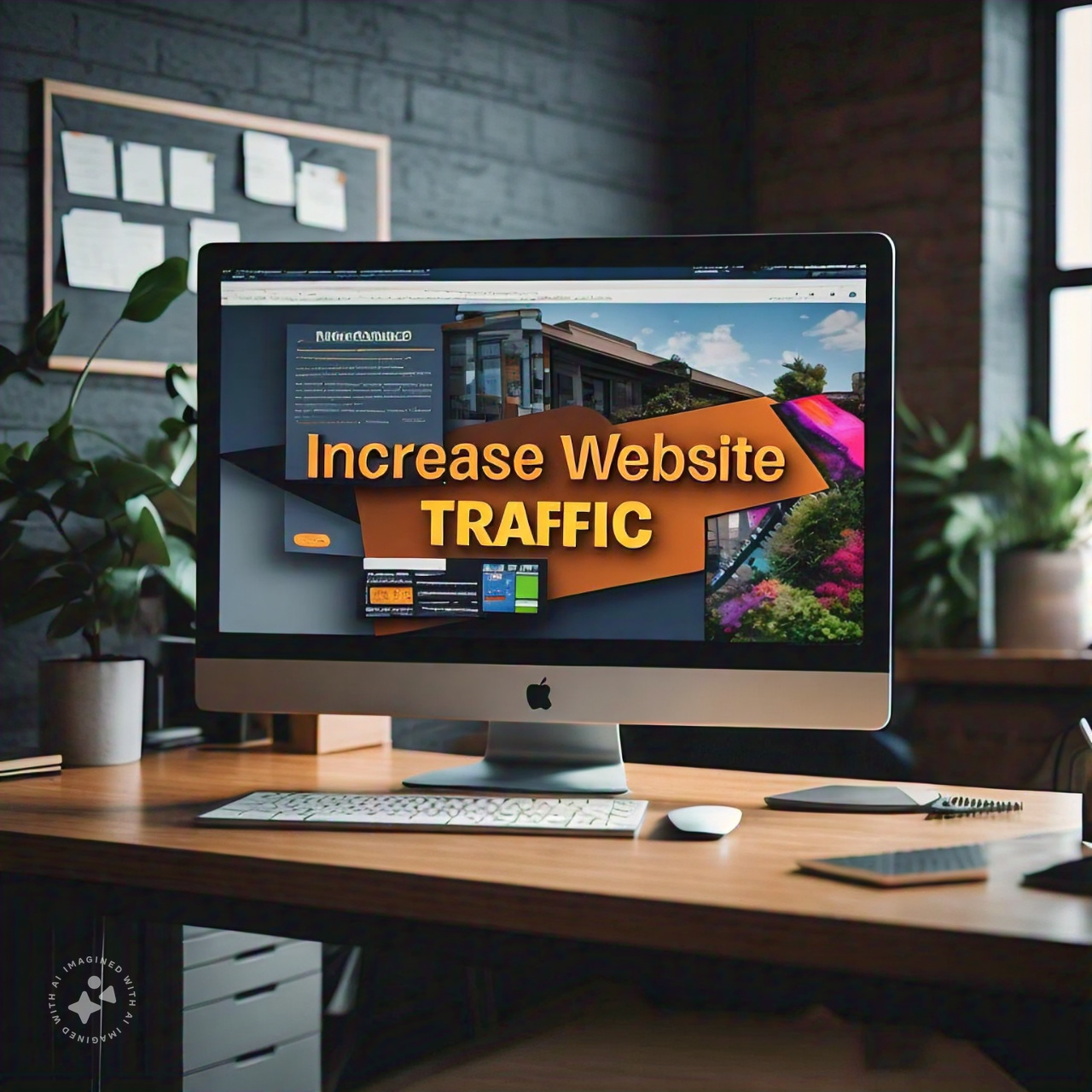10 Proven Ways to Increase Website Traffic for Small Businesses
As a small business owner, having a website is crucial for reaching new customers and growing your business. However, simply having a website is not enough—you need to drive traffic to it. In this article, we will explore 10 proven ways to increase website traffic for small businesses.
1. Understand Your Target Audience
Before you can drive traffic to your website, you need to understand who your target audience is. What are their interests, needs, and pain points? Create detailed buyer personas to guide your marketing efforts. Consider factors like age, location, job title, and goals. Understanding your audience allows you to tailor your content and marketing strategies effectively, ensuring that you’re reaching the right people.
To get started, use tools like Google Analytics to gather demographic data and user behavior insights. Surveys and customer feedback can also provide valuable information about what your audience is looking for. The more you know about your audience, the better you can address their needs and attract them to your website.
2. Optimize Your Website for SEO
Search Engine Optimization (SEO) is crucial for getting your website found online. Ensure your website is optimized for relevant keywords, has fast loading speeds, and is mobile-friendly. Use tools like Google Keyword Planner and SEMrush to find the best keywords for your business.
Key SEO Elements to Focus On:
- On-page SEO: Optimize your page titles, meta descriptions, headers, and images with relevant keywords.
- Content: Create high-quality, keyword-rich content that answers your audience’s questions.
- Technical SEO: Improve site speed, mobile-friendliness, and secure your site with HTTPS.
- Backlinks: Build high-quality backlinks to boost your site’s authority.
Regularly update your content and conduct SEO audits to stay ahead of the competition and improve your search engine rankings.
3. Create High-Quality Content for Website Traffic
Creating high-quality, engaging content is essential for attracting and retaining website visitors. Use a variety of content formats such as blog posts, videos, and infographics. Focus on providing value to your audience, and make sure your content is well-researched and informative.
Content Tips:
- Be informative: Address your audience’s pain points and provide solutions.
- Be engaging: Use storytelling and visuals to make your content more engaging.
- Be consistent: Regularly publish new content to keep your audience engaged and encourage repeat visits.
Consider creating cornerstone content—comprehensive, long-form articles on key topics in your industry. This type of content can attract more organic traffic and establish your website as an authority in your niche.
4. Leverage Social Media
Social media is a powerful tool for driving website traffic. Share your content, engage with your audience, and use paid social media ads to reach new customers. Use platforms like Facebook, Twitter, Instagram, and LinkedIn to reach your target audience.
Social Media Strategies Website Traffic:
- Content Sharing: Share your blog posts, videos, and other content on social media to drive traffic back to your website.
- Engagement: Respond to comments and messages, participate in relevant discussions, and build a community around your brand.
- Paid Advertising: Use targeted ads to reach specific demographics and drive traffic to your website.
Remember to use a consistent brand voice and visual identity across all platforms to create a cohesive online presence.
5. Build an Email List
Email marketing is an effective way to drive website traffic and nurture leads. Build an email list by offering incentives like free e-books, exclusive content, or webinars. Send regular newsletters to keep your audience engaged and drive traffic to your website.
Email Marketing Tips:
- Segment Your List: Tailor your messages to different segments of your audience based on their interests and behavior.
- Personalize Your Emails: Use personalized greetings and relevant content to increase engagement.
- Include Clear CTAs: Encourage subscribers to visit your website, read your latest blog post, or check out a new product.
Use email marketing software like Mailchimp or Constant Contact to manage your campaigns and track performance.
6. Partner with Influencers Website Traffic
Partnering with influencers in your industry can help expand your reach and drive website traffic. Choose influencers who align with your brand values and target audience. Collaborate on content Premium Guest Posting Services, social media posts, or webinars to reach new customers.
Influencer Marketing Tips:
- Find the Right Influencers: Look for influencers with a following that matches your target audience.
- Set Clear Goals: Define what you want to achieve with your influencer partnerships, such as increased traffic, brand awareness, or sales.
- Track Results: Use tracking links and promo codes to measure the impact of your influencer campaigns.
Influencer marketing can be a cost-effective way to reach new audiences and build credibility for your brand.
7. Use Paid Advertising Website Traffic
Paid advertising options like Google Ads and Facebook Ads can help drive website traffic quickly. Set clear goals, target your audience, and monitor your ad performance. Use retargeting ads to reach users who have already visited your website.
Paid Advertising Tips:
- Define Your Goals: Whether it’s increasing traffic, generating leads, or boosting sales, have a clear objective for your campaigns.
- Target the Right Audience: Use detailed targeting options to reach specific demographics, interests, and behaviors.
- Optimize Your Ads: Test different ad creatives, headlines, and calls to action to find what works best.
Track your ROI and adjust your strategies based on performance data to ensure you’re getting the most out of your ad spend.
8. Analyze and Track Your Website Traffic
Use analytics tools like Google Analytics to track your website traffic, engagement, and conversion rates. This will help you understand what’s working and what needs improvement. Monitor metrics like bounce rate, time on site, and pages per session.
Analytics Tips:
- Set Up Goals: Track specific actions you want users to take, such as form submissions or purchases.
- Use Heatmaps: Tools like Hotjar can help you understand how users interact with your site.
- Analyze User Behavior: Look at how users navigate your site and identify any bottlenecks or drop-off points.
Regularly review your analytics data to refine your marketing strategies and improve your website’s performance.
9. Improve User Experience
Ensure your website provides a positive user experience. Make it easy to navigate, fast, and mobile-friendly. Use clear and concise language, and make sure your website is free of errors.
User Experience Tips:
- Simplify Navigation: Ensure users can easily find what they’re looking for.
- Optimize for Speed: Compress images, use a content delivery network (CDN), and minimize code to improve page load times.
- Design for Mobile: Use responsive design to ensure your site looks and functions well on all devices.
A positive user experience not only helps with SEO but also encourages visitors to stay longer and engage more with your content.
10. Stay Consistent
Driving website traffic is an ongoing process. Stay consistent with your marketing efforts, and continually adapt and improve your strategy. Use data to inform your decisions, and stay up-to-date with the latest marketing trends.
Consistency Tips:
- Create a Content Calendar: Plan and schedule your content to ensure regular updates.
- Monitor Trends: Stay informed about changes in SEO, social media, and digital marketing to keep your strategies current.
- Iterate and Improve: Continuously test and refine your tactics to achieve better results.
By implementing these 10 proven strategies, you can increase website traffic for your small business and drive growth. Remember to stay focused on your target audience, and continually provide value to them. With time and effort, you can drive more traffic to your website and achieve your business goals.
More best posts
Boost Your Business with Affordable Local SEO Services: Hire an Expert
How Temporary Email Services Enhance Online Privacy and Security
Optimizing IT Infrastructure for Business Growth
The Crucial Role of Professional Finance Translation
The Future of Financial Management: Embracing Virtual CFO Services







